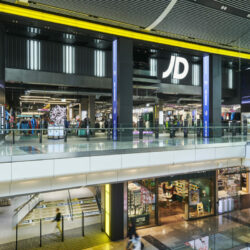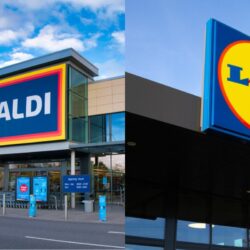With footfall on the UK high street in decline, town centres need to adapt if they are to survive. As the proportion of retail spending taking place at out-of-town centres and online rises, many are predicting a hollowing out of inner-city shopping similar to that affecting many US cities.
Known as ‘the doughnut effect‘ in the US – as families and businesses migrate from the inner suburbs to the periphery – many predict the British high street will become a boarded-up hole. The vacancy increase caused by a pinch on trading conditions as the recession bites is contributing to the decline, discouraging shoppers and leading to the closure of other retailers that might otherwise have survived.
Demand for retail units on the high street has fallen due to the growth of online shopping and convenience stores along with a growing challenge from out-of-town retailers. The number of empty shops in London has risen to 3,400 in three years and there is a capital-wide vacancy rate of seven per cent, according to the British Retail Consortium.
The most recent figures from the IMRG and Capgemini eRetail show that the online retail market grew by 13 per cent year-on-year in February, slightly ahead of the predicted 12 per cent growth expected for the whole of 2013. However, growth in online spending need not equate to falling high street footfalls if town planners and retailers would only be more imaginative in their outlook.
It was just such an imaginative outlook that was identified by Mary Portas in her report commissioned by the Government. She identified the need to ‘put the heart back into the centre of our High Streets‘ by making town centres more than just a place to shop and populating them with a mixture of galleries, cafés and shops.
Portas also set out a series of measures to support Britain‘s high streets, such as market days, an easing of parking charges, and a rethink of business rates. The fact that a year on, just seven per cent of the fund put aside to achieve this is a damning indictment of the overly complex and hesitant local planning process in the UK. The results of the latest consultation from the Business Innovation and Skills Committee cannot come soon enough, not least because hard-pressed grocery retailers are stepping up their challenge.
Free and easy parking has long been a key factor in the growth of out-of-town stores, and the plight of the high street has not been helped by cash tapped Councils seeing parking fees as a source of income. The major chains are stepping up their challenge, Tesco‘s purchase of child-friendly restaurant chain Giraffe is a clear move to establish its out-of-town stores as destination malls, where families can spend more time, as well as shop. Over the next two years, the supermarket giant plans to open 10 new Giraffe outlets next to Tesco Extra hypermarkets with further sites planned over the next few years. The move comes as out-of-town retailers come to the same conclusions as Portas, that to boost trade they must meet shopper demands for quality restaurants and cafés.
Alongside measures such as increasing the range of services on offer at a shopping destination, the quick growing click and collect approach can be another reason for consumers to leave their homes and visit the shops. John Lewis‘ successful ‘clicks and bricks‘ strategy, embraces the internet and encourages customers to visit its stores. The retailer has recently joined the Collect+ scheme, which allows shoppers to pick up and return items bought on the internet at up to 5,000 independent retailers across the UK.
Local planners and retailers must be clear though that while the growth of click and collect services is an opportunity for the high street it can equally well be combined with a visit to a large out of town supermarket. Convenience depends on context, but we can be sure that ease and price of parking is likely to p
RELATED STORIES

















